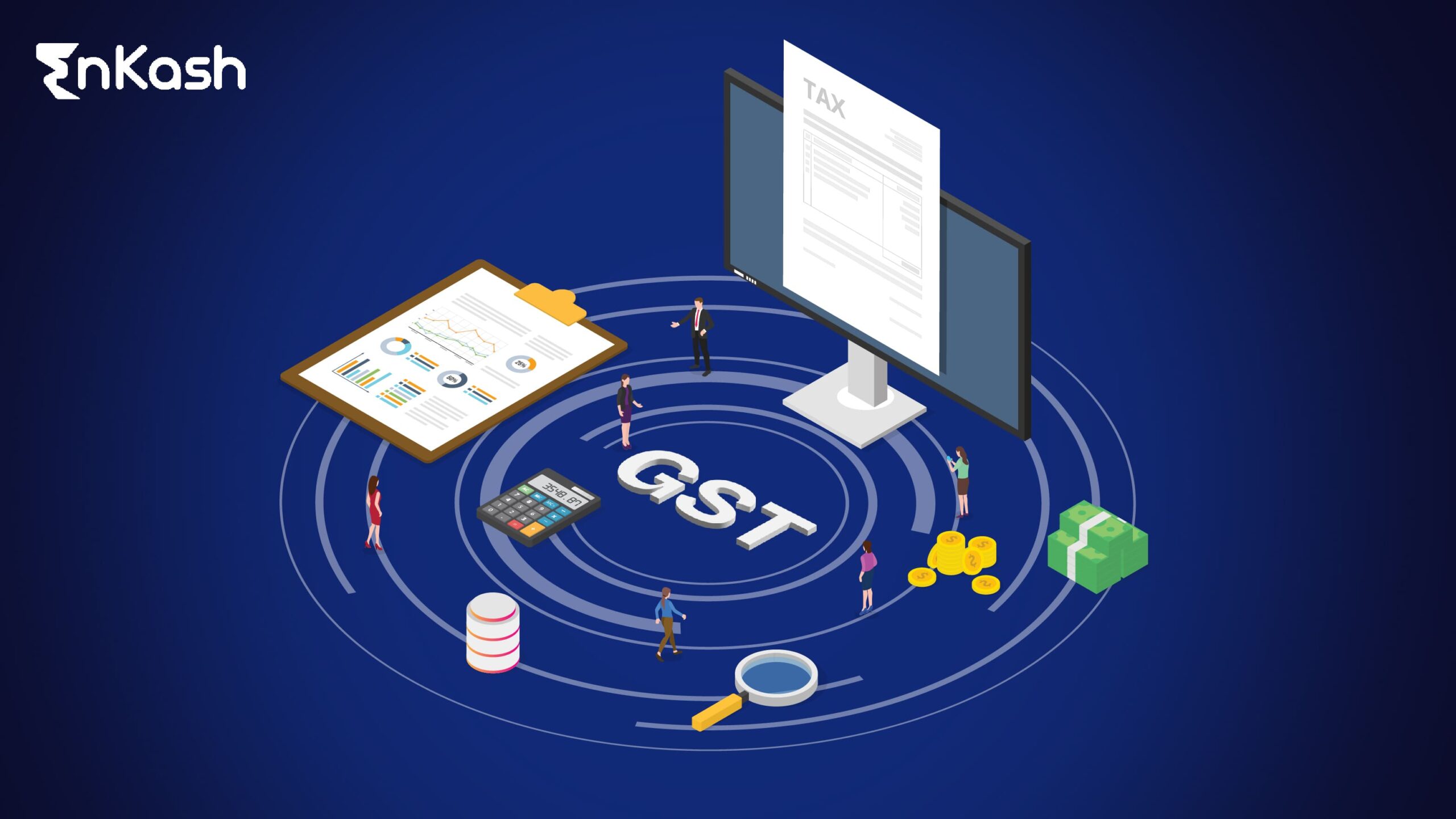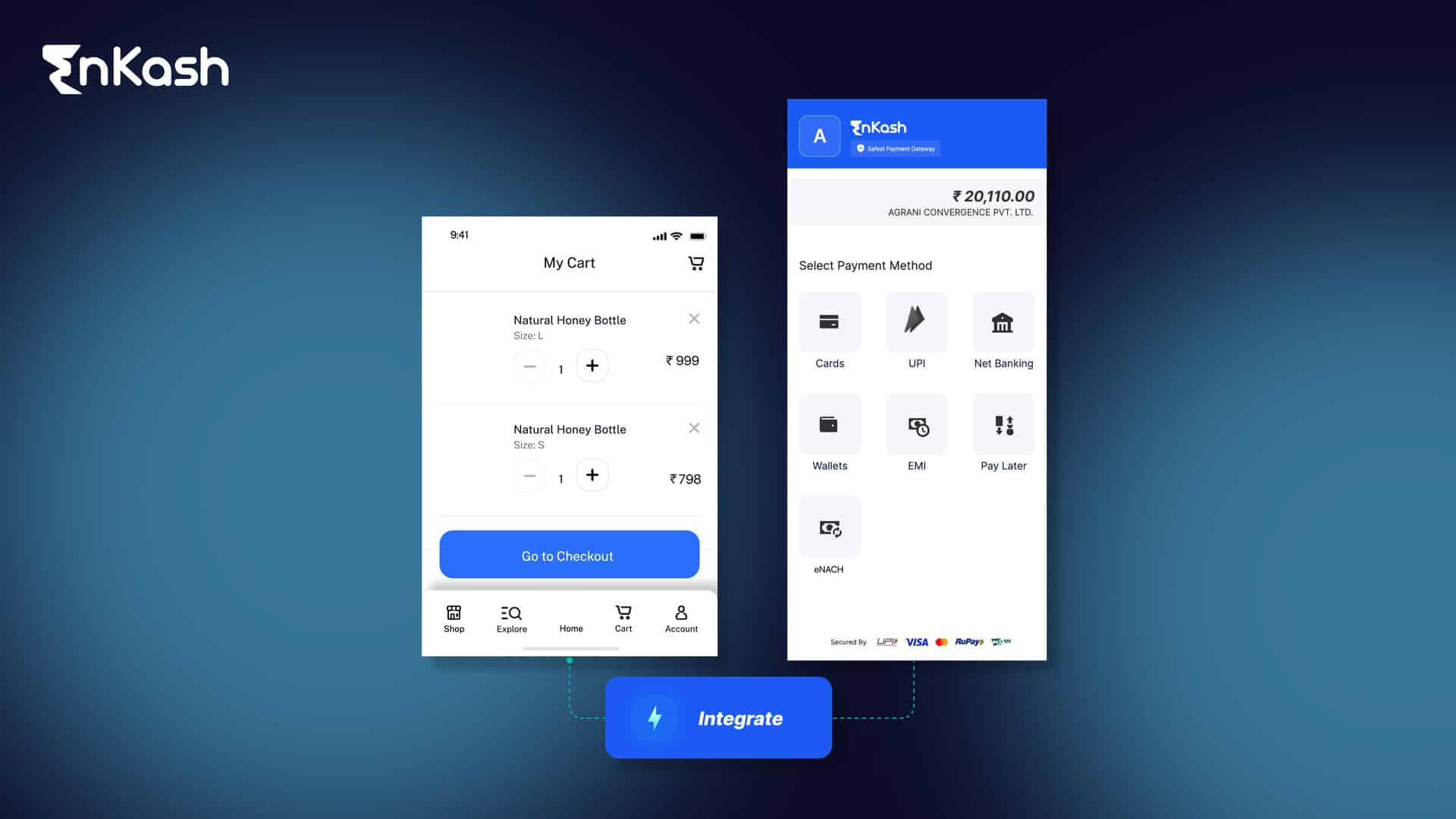Now, with the introduction of Goods and Services Tax or GST in India, it is necessary for companies and individuals to know how to register for GST. GST registration is how companies legally collect taxes from sales. Additionally, certain types of taxpayers must register based on turnover and business type. Whether you are registering as a company owner, a freelancer, or an individual subject to GST, this tutorial explains how you can complete the GST registration process step by step.
What is the GST Registration Process?
The GST registration process is the formal procedure for businesses and individuals to register under the Goods and Services Tax (GST) system in India. By registering, businesses receive a GSTIN that allows them to collect taxes legally, file GST returns, and claim input tax credits. GST registration is mandatory for entities with annual turnovers above certain thresholds, casual taxable persons, and other limited categories such as e-commerce companies and service providers.
The GST registration process is entirely online and involves submitting an application on the GST portal, entering relevant business information, and identity verification processes. This may include Aadhaar verification or a tax official site inspection, depending on the business model and the turnover. Once completed, GST registration gives businesses a tax identity that makes it easy to comply with and work across state lines in India’s unified tax system.
Who Needs GST Registration?
GST registration is mandatory for all types of companies and individuals in India according to their turnover, business form, and transactional nature. Generally, every business with an annual turnover above ₹40 lakh ( ₹20 lakh for services, ₹10 lakh for certain states such as Northeastern and hill states) has to go through the GST registration process. Further, certain kinds of companies must apply for registration irrespective of turnover. This includes:
- Casual Taxable Persons: Anybody or any organization executing seasonal or temporary businesses such as stalls or kiosks should be declared casual taxable persons.
- E-commerce Operators & Aggregators: Aggregators who offer products or services on the Internet and serve as intermediaries must also register.
- Non-Resident Taxable Persons: Individuals residing outside India but providing taxable goods or services within India are subject to GST registration.
- Interstate Suppliers: Corporations selling across state lines are required to register regardless of sales volume.
Failure to register GST when it is applicable may incur fines and cut-off tax credits, affecting business profitability and compliance.
Read more: Credit Note in GST
Documents Required For GST Registration Process
Candidates have to submit various key documents for identity, address, and business status to be eligible for GST registration. The following are the required documents for GST registration:
- PAN Card: You must provide the business or the applicant’s Permanent Account Number (PAN).
- Aadhaar Card: Aadhaar is used as an identity card, specifically for individual candidates.
- Confirmation of Place of Business: Documents such as property tax records, utilities, or lease documents prove a business’s primary address.
- Digital Signature Certificate (DSC): Companies and LLPs require a DSC to sign the GST application digitally.
- Bank Account Information: Although initially optional, bank account information (e.g., account statement, canceled cheque) is needed for post-registration amendments.
- Photos of the Applicant: For all individuals, including partners, recent passport-size pictures are required.
- Evidence of Company Structure: In the case of companies or LLPs, documents such as the Memorandum of Association (MOA), Articles of Association (AOA), or partnership deeds establish the business’s constitution and validity.
Making these documents ready and verifying them beforehand simplifies the GST registration process and prompts smooth approval by GST officials.
Step-by-Step GST Registration Process
The GST registration process has two different parts. It covers the GST registration process for individuals as well as businesses. Let’s understand both of these parts in detail below.
Part A: Initial Registration and TRN Generation
- Visit the GST Portal: Navigate to the official GST website www.gst.gov.in. From the home page, go to Services > Registration and click New Registration.
- Enter Business and Contact Details: Select Taxpayer from the drop-down list and enter your company and contact details. These include the legal name of the business on the PAN card, state and district, and a valid email address and mobile number.
- Verification: You will receive an OTP to your mobile number and email address. Provide the OTP for verification, then click Proceed.
- Temporary Reference Number (TRN): If verified successfully, you’ll be assigned a 15-digit TRN (Temporary Reference Number). Take note of this TRN because you’ll need it to continue Part B of the registration form.
- Log in with TRN: Return to the GST portal and click on New Registration. Enter the generated TRN, answer the CAPTCHA, and click Proceed. The OTP will be sent to your email address and mobile number. Fill in the OTP and navigate to your Saved Applications section.
Read more: Difference between CGST, SGST, and IGST
Part B: Detailed Application Submission
Business Details
- Legal Name & Trade Name: Enter the registered legal name and trade name if not present. The trade name is used publicly and it may or may not be different from the legal name.
- PAN Verification: GST checks your PAN against CBDT records.
- Type and Business Constitution: Enter the business constitution (Proprietorship, Partnership, LLP, Company).
- Composition Scheme: Use the composition scheme if your turnover falls below the threshold and you are eligible.
- Beginning Date: Indicate the commencement date of the business and GST obligations.
Promoters and Partners
- Enter the information of all promoters or partners up to 10 at a time. Name, address, mobile, email, and identification information (e.g., DIN for directors).
- Make sure your photos are JPEG or PDF (less than 1MB).
Authorized Signatory
- Designate a notified signatory to manage GST compliance. Their information should match the Authorized Signatory tab and could include DIN (for directors) or Aadhaar information.
- Upload appointment documents (LLPs, companies) for authorized signatories.
Principal Place of Business
- Enter the business’s physical address where records and books are kept. Choose the state, district, and location of your exact address.
- Upload Address Proof: Attach evidence such as lease agreements, property tax invoices, or utility bills.
- Property Type: Define the property type (rented, leased, owned).
Additional Place of Business
- If your company has branches, provide more addresses here. Just repeat the address and proof of residency processes for each site.
Goods and Services
- Enter the HSN (Harmonized System of Nomenclature) codes for products or SAC (Service Accounting Code) for business-related services. You can enter as many as 5 codes for each, but you want to start with the most number.
Bank Account Details
- While this is optional when signing up, after signing up, you will have to submit bank account information. Enter up to 10 accounts with account numbers and IFSC codes.
State-Specific Information
- This tab may require state-specific information like Professional Tax Registration Number or State Excise License Number. Information requirements vary by state.
Aadhaar Authentication
- You can choose Aadhaar authentication to make it more efficient. Enter Yes for Aadhaar authentication if you wish. An authentication link will be generated for existing Aadhaar-linked contacts.
- No Aadhaar Choice: If you choose No, additional verifications, such as a visit to the location, might be required.
Verification
- Check all fields, tick the Verification box, select the Name of Authorized Signatory from the drop-down, and enter the Place of Filing.
- Signature Methods: Complete validation through DSC, E-Signature, or EVC:
- DSC: Required for LLPs and corporations.
- E-signature: Available for non-corporate bodies holding an Aadhaar-enabled mobile.
- EVC: OTP-based verification on the authorized signatory’s registered mobile.
After submitting the application with signatures, you’ll get an Application Reference Number (ARN) by email and SMS. Monitor the ARN status on the GST portal under Track Application Status.
Biometric Aadhaar authentication has recently been introduced in India that allows to skip the actual site visit and save time. Tax authorities may perform a site visit or ask for more documentation if the Aadhaar is not authenticated.
Read more: Types of GST
Common Challenges in GST Registration
The GST registration process is easy in theory, but it can still be challenging for applicants. Preparing for these common mistakes will facilitate GST registration and minimize delays or rejections.
- Inconsistency in Information: Mismatched information, notably PAN, Aadhaar, or business details, can cause an application to be rejected or delayed. Ensuring that all data are consistent with official records will avoid these problems.
- Technical Issues in GST Portal: In the GST portal, sometimes there might be excessive traffic or any technical issue that prevents you from registering. Try switching to a different browser, refreshing the cache, or accessing the portal during off-peak hours.
- Prolonged Processing with Aadhaar Authentication: Avoiding Aadhaar authentication will increase processing time due to tax official’s site visits. Using Aadhaar authentication will speed up verification.
- Documentation Filing Issues: If your documents are not in the right or missing, for example, an address or identification document, it may stall the approval process. Check document types and sizes (PDF or JPEG, under 1 MB) before uploading for easy submission.
- TRN Expiry: If Part B of the registration is not completed, the TRN expires in 15 days. Applicants should submit Part B as quickly as possible to avoid retaking the process.
- Address Verification Issues: A missing or incorrect address information will cause registration issues.
Advantages of GST Registration
The GST registration process benefits businesses and consumers in terms of compliance, trust, and profitability. Some of those benefits are listed below.
- Input Tax Credit (ITC): One of the most important benefits is that you can claim ITC on your purchases, lowering your tax rate. It allows companies to regulate their cash flow and increase profit margins for B2B transactions.
- Legalization and Tax Compliance: Licensed firms are granted legal status, which lets them collect and remit GST to the authorities, legitimizing their business.
- Composition Scheme: Small organizations generating less than ₹1.5 Crore can opt for the GST composition scheme, which offers a low tax rate and fewer filings.
- Easy State Compliance: GST provides one tax regime that avoids multiple state taxes, reducing tax burdens in interstate commerce.
- Greater Business Reputation: GST registration also boosts the trust of a business and will attract larger corporations, government contracts, and even clients who would prefer to deal with tax-compliant companies.
- Penalties Exemptions: Leaving your business without GST registration will land you in trouble. Registering will guarantee you are tax compliant and will avoid large fines if you aren’t registered.
GST registration improves operational efficiency, compliance, and competitiveness in the long run, making it useful for businesses of all sizes.
Read more: Types of GST returns
GST Registration Exemptions
The GST registration process is required by the majority of companies, although some categories and transactions are exempted from it. These exemptions typically cover only small businesses and some supplies. For example, companies that sell non-GST products or services, such as agricultural produce or exempted products do not need to register. Moreover, businesses that make less than the prescribed income per annum are exempted. These incomes are as ₹40 lakh for general enterprises, ₹20 lakh for service providers, and ₹10 lakh for firms in some hilly and northeastern states. Other exempt groups are those who provide reverse chargeable goods or services, wherein GST is paid by the recipient rather than the seller. Furthermore, individuals who supply non-taxable goods such as petroleum and alcohol are exempt. This GST Registration exemption eases the compliance burden for small enterprises so that they can continue to focus on business and reduce the tax burden.
Conclusion
The GST registration process is a significant step for all Indian companies as it grants them legal status and makes them fully eligible to contribute to the GST taxation system. After registering for GST, businesses can more effectively tax their customers, claim input tax credits, and meet state and national requirements. Although it takes multiple steps, ranging from documentation to identity verification, online registration is supposed to simplify compliance and increase tax transparency.
If a business or individual is eligible to register with GST, there are many benefits associated with doing so, such as a less complicated taxation system, fewer loophole taxes, and easier state-to-state logistics. Knowing all the steps and requirements, enterprises can confidently approach GST registration and remain legal in their operations while benefiting from GST’s efficiency in India’s taxation system.
Read more: GST state code list
FAQs
Who needs to register for GST?
Any company whose turnover is over 40 lakh (20 lakh for service providers and 10 lakh in some states) must be GST registered. This includes categories such as e-commerce merchants, input service providers, and businesses under the reverse charge mechanism.
What documents are required for GST registration process?
The key documents are the PAN card of the company, address proof, Aadhaar card, bank account details, and digital signature. Businesses should also provide proof of incorporation, partnership deed, and other documents depending on their type.
Which GST registration options are there?
The three major categories are Normal Taxpayers, Composition Taxpayers (for small businesses with lower tax rates), Casual Taxable Persons (for seasonal/temporary businesses), and Non-Resident Taxable Persons (for supplying goods or services in India without having a business office).
How long does it take for the GST registration certificate to be delivered?
The entire GST registration process takes about 7–10 working days. If Aadhaar verification is done, the approval can be faster, often in 3 days. Without Aadhaar, additional processes such as site verification may further lengthen the process.
Do I have to pay for GST registration?
No, GST registration is completely free if done directly through the GST portal. However, businesses that wish to hire a tax professional will be charged service fees.
What is a TRN, and why do I need one?
A TRN is a 15-digit number generated upon initiating the GST registration process. It allows applicants to store their registration history and continue the application within 15 days.
Can I register more than one business using the same GST registration?
Yes, multiple business locations can be added under the same GSTIN in the same state. But, businesses that operate in more than one state need to register separately.
Is Aadhaar authentication mandatory for GST registration?
Aadhaar authentication is optional but can speed things up and eliminate manual verification. If Aadhaar cannot be verified, the tax authorities might request site visits and cross-verification.
What if my GST registration is rejected?
If your application is denied or rejected, you will receive a response explaining the reasons for the refusal. You can then correct the mistakes and try again. You should check everything to ensure you won’t get rejected again.
How can I check my GST registration application?
You can see your application status on the GST portal with the Application Reference Number (ARN). Go to Services > Registration > Track Application Status, enter your ARN, and see the status.













